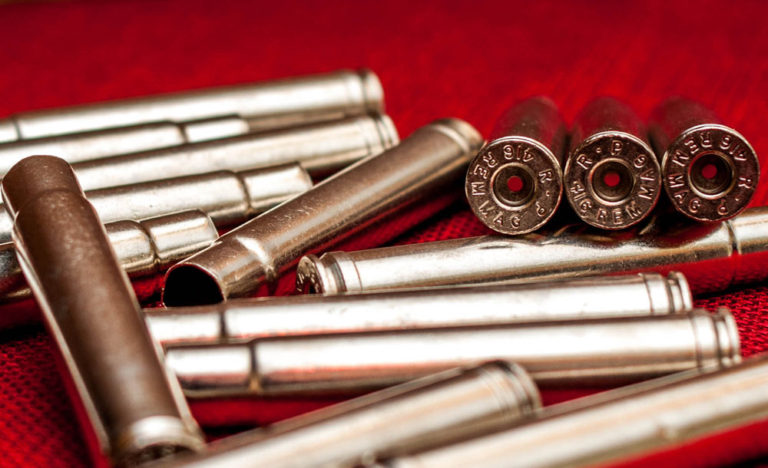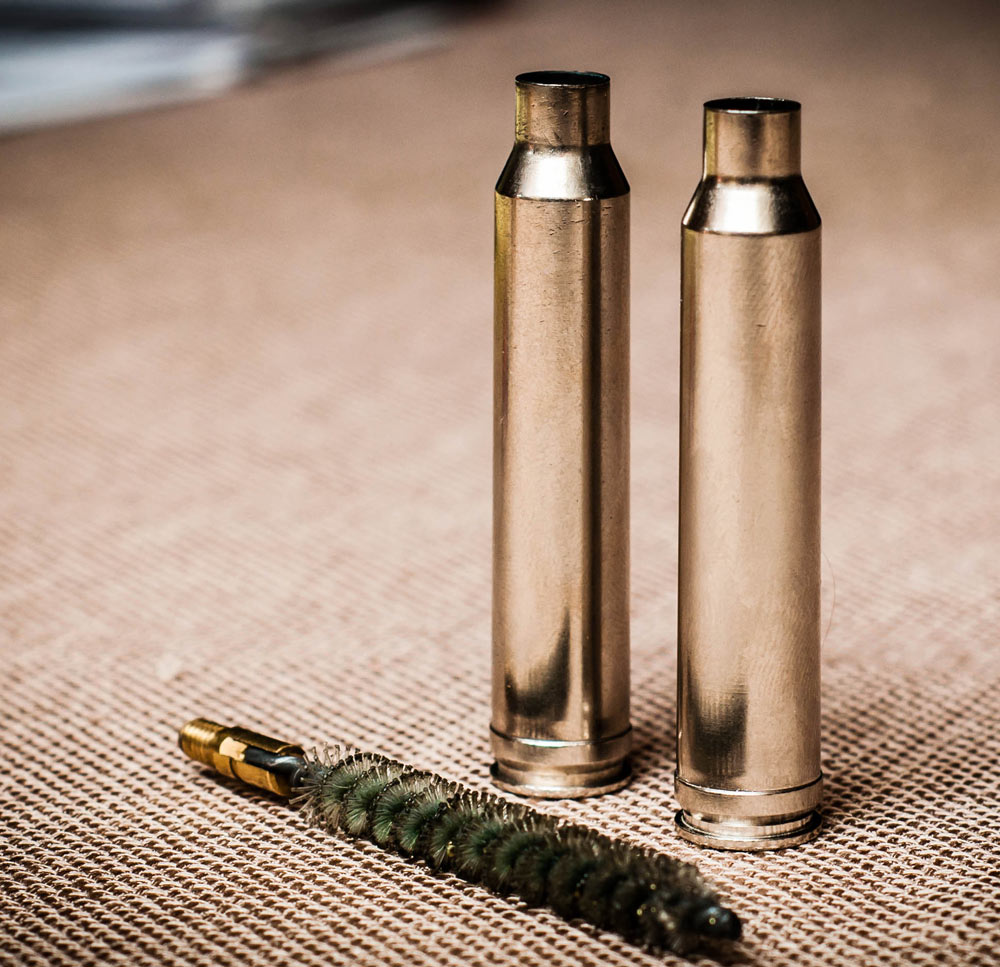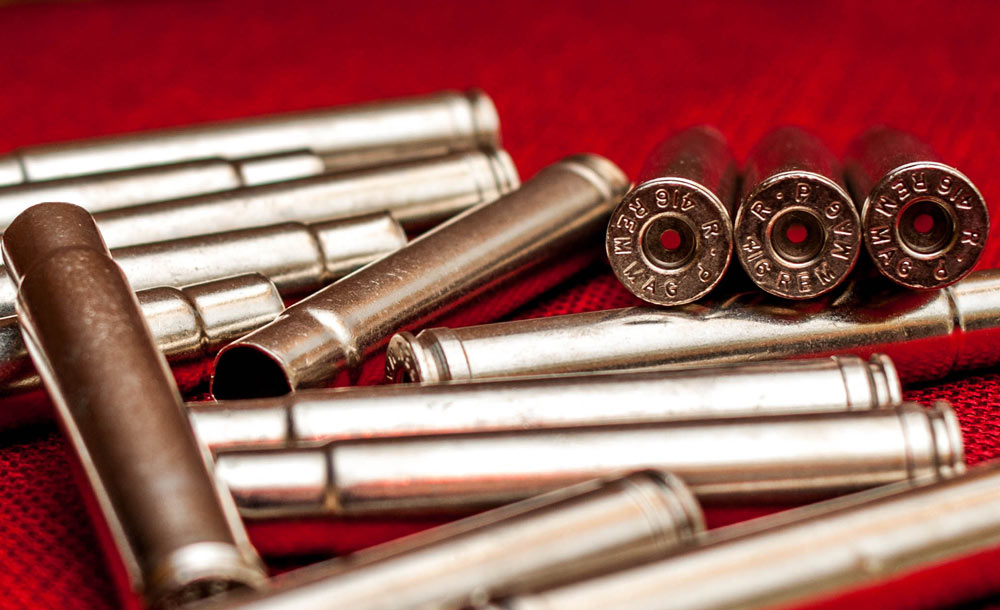

Nickel-plated cases are the shining gems of ammunition, but using the component for reloading takes some understanding of the material's characteristics.
When I first saw nickel brass cases around twenty or so years ago, I was immediately enamored. They were shiny, almost mirror-like, and when I read that they wouldn’t tarnish like a regular brass case, I simply had to have some.
I still use them for some applications, but in those twenty years, I’ve had some experiences with them that have forced me to rethink their uses.
Nickel-Plated Case Construction
The construction of these cases is relatively simple. They are a brass cartridge case, plated in nickel. Nickel is a metal that is still malleable enough to be worked, yet does not tarnish when carried in a leather shell holder or when handled with sweaty hands. These features are good, but they come at a price.
Reloading Considerations Of Nickel-Plated Cases
Nickel is harder than brass, and in repeated uses will scratch the inside of a standard reloading die. They are also more apt to stick in a reloading die. I know this firsthand, because when I first tried to load some ammunition for my .375 Holland & Holland Magnum, all I had was nickel-plated cases, and I simply didn’t use enough lubricant in the resizing process. Yep, I stuck that case in the resizing die so bad it seemed like I had welded the case in there. Had to toss that die, and I never forgot it.
Nickel cases also seem to vary a bit more in case volume. This can pose a problem in higher-pressure rifle cartridges. I have used “nickel brass” in my .22-250 Remington and my .300 Winchester Magnum, and here’s what I’ve noticed. The cases that performed with the same level of accuracy as their all brass counterparts had a different point of impact while using the same powder charge, primer type and brand, and the same particular bullet.
This effect is all but unnoticeable in the pistol cartridges, but the same drawbacks of reloading die damage apply unless you use a carbide or titanium resizing die. I use them frequently, and I don’t have an issue resizing nickel-plated pistol brass. I do however believe that as a result of the flaring of a pistol case’s mouth the harder nickel brass has a shorter life than the all brass variety.
Then there’s the issue of having small bits of nickel flake off into your firearm’s chamber or barrel, and that can be a problem. Brass can be removed with a good solvent, but nickel can’t be removed as easily, so when you clean your gun, be sure and use a good brush to remove all those tiny nickel fragments.
Usage Of Nickel-Plated Cases
Now, these issues don’t stop me from using nickel-plated brass. In fact, in some rifles, I use it almost exclusively. My favorite safari rifle, a Winchester Model 70 in .416 Remington Magnum, is one example.
When I first bought the rifle, Remington only offered nickel-plated brass as a reloading component. Therefore, I developed the load for this big stick using the case volume of the nickel cartridge cases, and it has proved to be a very accurate rifle and load. I use the nickel brass for all of my soft-point loads and reserve the brass cases for the solid bullets that African big game requires.
The soft points are what I use most often, and being a sweaty Italian in the tropical sun, I don’t worry about my paws tarnishing the cartridge cases while handling them on safari. This idea of two types and colors of cartridges makes them immediately identifiable. I use those nickel cases for my .300 Winchester specifically for the slower 220-grain loads that I use for black bear, and I can easily differentiate between those and the brass-cased, and much faster 180-grain loads I use for long-range work.

If you choose to load nickel-plated brass in your rifle, I recommend you pick up enough to create a good amount of ammunition, so that you don’t have to worry about a different point of impact with all brass cases. If you’re worried about pinpoint accuracy from your handgun, I would recommend segregating the brass from the nickel, and range testing the two to see if there is any difference in target impact.
I’d be willing to bet you won’t, but it’s always good to know.

Next Step: Get your FREE Printable Target Pack
Enhance your shooting precision with our 62 MOA Targets, perfect for rifles and handguns. Crafted in collaboration with Storm Tactical for accuracy and versatility.
Subscribe to the Gun Digest email newsletter and get your downloadable target pack sent straight to your inbox. Stay updated with the latest firearms info in the industry.

![Best Concealed Carry Guns In 2025 [Field Tested] Wilson Combat EDC X9S 1](https://gundigest.com/wp-content/uploads/Wilson-Combat-EDC-X9S-1-324x160.jpg)


![Best 9mm Carbine: Affordable PCCs [Tested] Ruger Carbine Shooting](https://gundigest.com/wp-content/uploads/Ruger-Carbine-Shooting-100x70.jpg)
![Best AR-15: Top Options Available Today [Field Tested] Harrington and Richardson PSA XM177E2 feature](https://gundigest.com/wp-content/uploads/Harrington-and-Richardson-PSA-XM177E2-feature-100x70.jpg)

Good article, one problem I have run into with nickel plated brass is in my Winchester Model 70, in 300 WSM. I had some factory Winchester Supreme ammo, with nickel plating. When I fried these rounds, the bolt would lock-up for a few seconds after I fired them. Firing brass cartridges I had zero problems. Not sure if the chamber is really tight and the nickel plating causes just enough of a difference to get stuck, until it cools just a bit. Not a good situation if you need a quick follow-up shot.
All my other rifles I have no problems with nickel plated brass.
I loved it when you said that nickel-brass cases are the shining gems of ammunition, but to use the component for reloading takes some understanding of the material’s characteristics. I will share this with my uncle, who is fond of rifles. I’m sure he will be looking for this rifle brass for reloading, buy some and add to his collections. https://precisionbrass.net/product-category/rifle-casing/